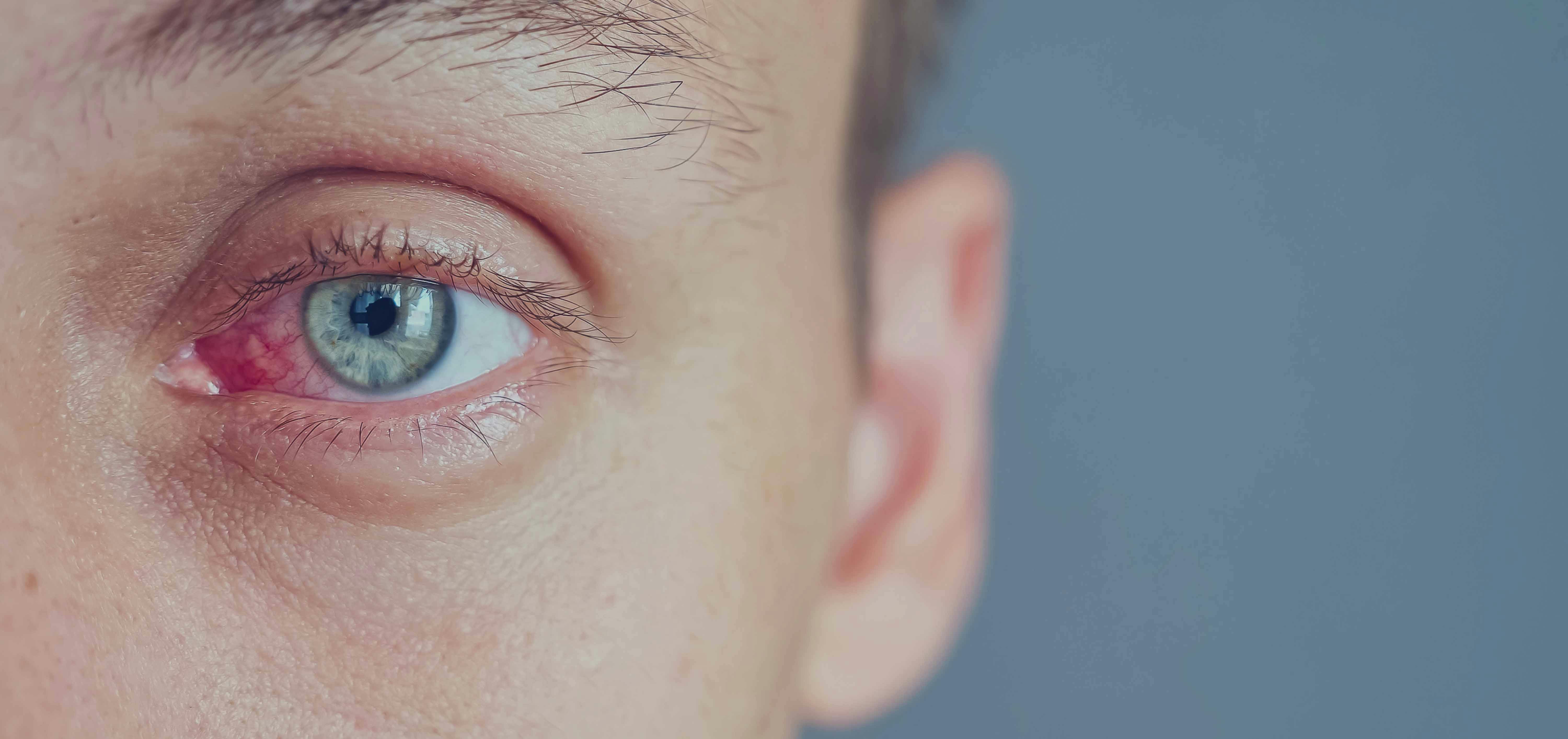Red eyes


Introduction
Introduction
Redness or irritation of an eye is often harmless, but certain situations with a red eye require prompt medical consultation. If you notice a decrease in your vision, you should seek urgent consultation.
Red eyes do not necessarily indicate an illness. It could be due to excessive rubbing of the eyes, lack of sleep, dry eyes, a cold, wearing contact lenses, prolonged exposure to a screen, the sun, or an irritating product (soap, dust, pool chlorine, smoke).
In addition to these causes, the most common conditions responsible for 'red eye' are conjunctivitis and subconjunctival haemorrhage.
The conjunctiva is a thin, moist, and transparent membrane that allows the eyelids to slide over the eye. It covers the inside of the eyelids and the front part of the eye. Conjunctivitis is an inflammation of this membrane, for example, due to a bacterium or an allergy.
Infectious conjunctivitis manifests itself by redness of the eye, itching, a sensation of sand in the eyes, tear presence, and sometimes secretions that can stick the eyes together, especially at night. To prevent conjunctivitis that affects one eye from spreading to the other, avoid touching your eyes and wash your hands regularly.
Allergic conjunctivitis appears in a person suffering from an allergy, hay fever for example. In this situation, both eyes are usually affected, and a cold with a stuffy nose and sneezing is often also present.
A subconjunctival haemorrhage is bleeding ('a spot') behind the conjunctiva of the eye. It can be spontaneous or follow a coughing fit or sneezing. Although this redness can be impressive, it is harmless.

Treatments
Treatments
As red eye can be caused by numerous factors, the treatment will depend on the diagnosis.
If it is a simple redness caused by fatigue, sunlight, or a slight irritation, try to rest your eyes, wear sunglasses, and avoid screens for a while. In case of soap, dust, or another irritant in the eye, it is possible to rinse the eyes with water or with small bottles of liquid known as 'artificial tears'.
Allergic conjunctivitis will be treated by applying warm water compresses three times a day and using anti-allergic drops (for example: Azelastine hydrochloride or Emedastine) until the symptoms disappear.

Warning
Warning
Certain situations require medical evaluation: in case of trauma to the eye, severe pain, vision problems, or headaches, a quick consultation is necessary. The onset of a red eye in a contact lens wearer also requires an urgent consultation with an ophthalmologist.

To learn more
To learn more
You will find on the Planète Santé website a page dedicated to conjunctivitis and on the Merck Manual website a page on subconjunctival haemorrhage.